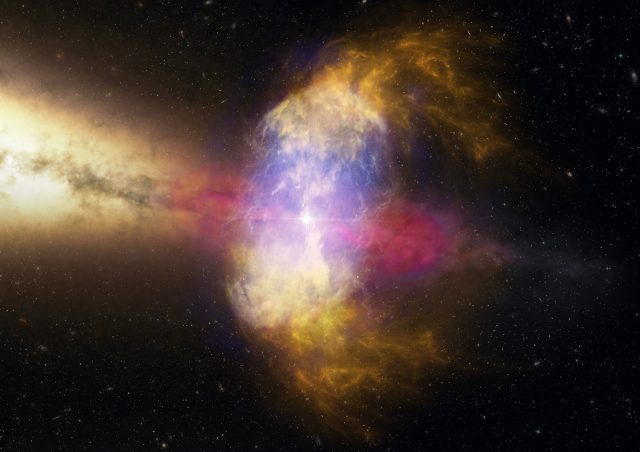A team of scientists, including Chief Investigator Ilya Mandel from the ARC Centre of Excellence for Gravitational Wave Discovery (OzGrav) at Monash University, recently studied what happens to rotating massive stars when they reach the end of their lives.
Stars produce energy by fusing lighter elements into heavier ones in their core: hydrogen into helium, then helium into carbon, oxygen, and so on, up to iron. The energy produced by this nuclear fusion also provides pressure support inside the star, which balances the force of gravity and allows the star to remain in equilibrium.
This process stops at iron. Beyond iron, energy is required to sustain fusion rather than being released by fusion. A heavy iron star core contracts under gravity, creating a neutron star, or if it is heavy enough, a black hole. Meanwhile, the outer layers of the star explode in a brilliant flash, observable as a supernova. However, some massive stars seem to completely disappear without any explosion. Theories suggest that these massive stars completely collapse into black holes, but is that possible?
A team led by Ariadna Murguia-Berthier, a Ph.D. candidate at the University of California Santa Cruz, and involving OzGrav Chief Investigator Ilya Mandel, set out to answer this question. They were particularly interested in understanding whether a rotating star could quietly collapse into a black hole.
In their paper submitted to Astrophysical Journal Letters, they describe a set of simulations investigating the collapse of a rotating gas cloud into a black hole. They found that if the gas is rotating too quickly at the beginning, it cannot efficiently collapse; instead, the gas stalls in a donut-like shape around the equator of the black hole.
Find your dream job in the space industry. Check our Space Job Board »
The team hypothesized that the heat generated from falling gas slamming into this spinning gas donut will unbind the outer layers of the star and create a supernova-like explosion. A small percentage of all stars were also found to rotate slowly enough—below the threshold for this gas stalling to occur—and could, indeed, collapse into black holes quietly.
“It’s very exciting to bring together general relativity, sophisticated computational techniques, stellar models, and the latest observations to explore the formation of black holes from massive stars,” says Mandel.
Provided by: ARC Centre of Excellence for Gravitational Wave Discovery
More information: Murguia-Berthier et al. On the maximum stellar rotation to form a black hole without an accompanying luminous transient. arXiv:2005.10212 [astro-ph.HE] arxiv.org/abs/2005.10212
image: Artist’s impression of a supernova
Credit: James Josephides, Swinburne University of Technology











